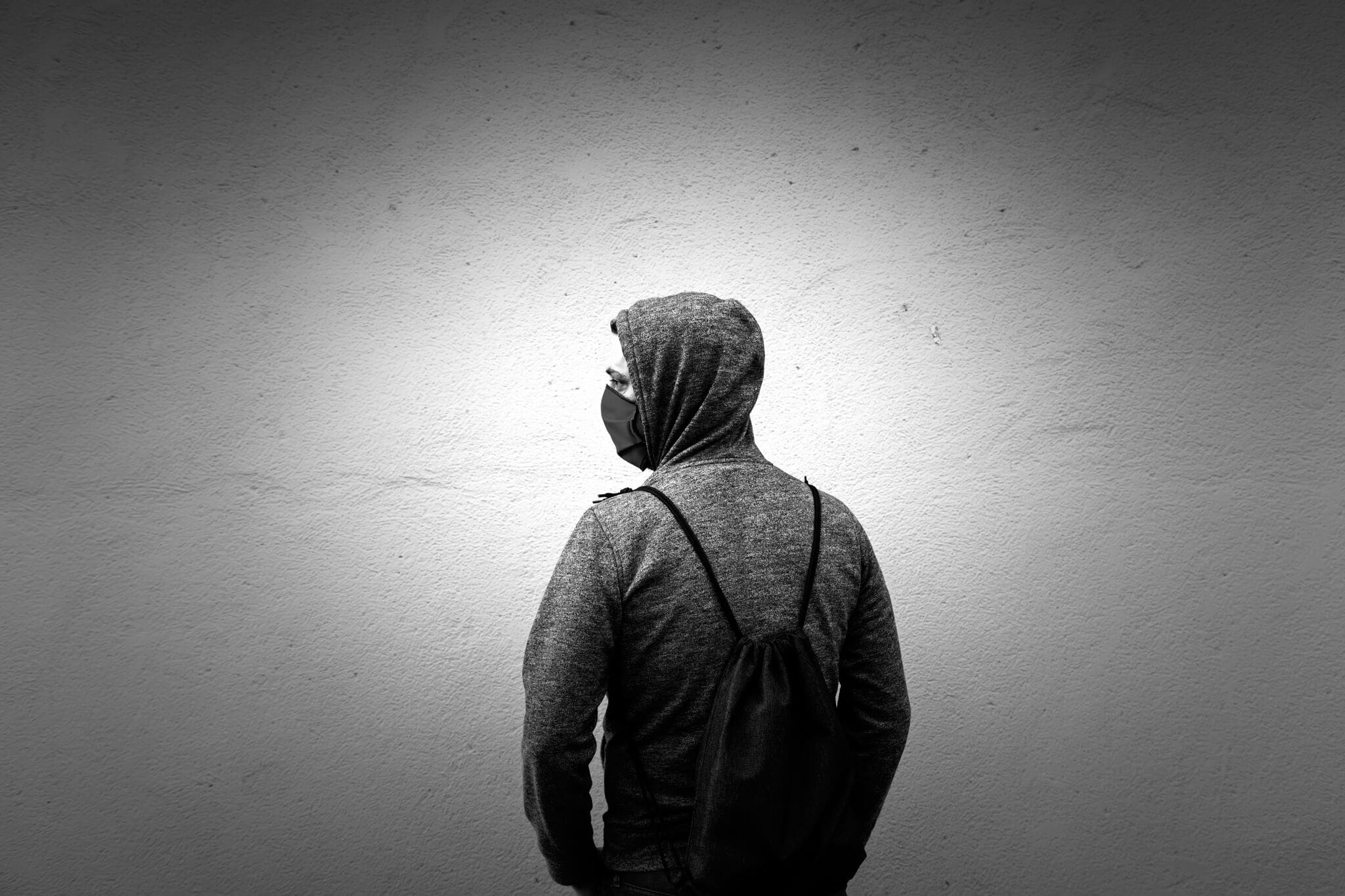In this article
According to PTSD UK 1 in 10 people in the UK are expected to experience PTSD at some point in their lives, that’s around 6,665,000 people in the UK. The NHS states that around 33% of people who experience trauma may go on to develop Post Traumatic Stress Disorder.
Post-Traumatic Stress Disorder (PTSD) is a complex mental health condition that can emerge after experiencing or witnessing a deeply distressing event. It is sometimes associated with military veterans, however PTSD affects people from all walks of life, including those who have faced accidents, assaults, natural disasters, or other traumatic experiences.
Recognising the signs of PTSD is crucial, as early identification and support can make a significant difference in the path to recovery. This article explores the key symptoms and behavioural changes that may indicate someone is living with PTSD, aiming to foster understanding and encourage timely intervention.

What is PTSD?
Post-Traumatic Stress Disorder (PTSD) is a mental health condition that can develop after a person experiences or witnesses a traumatic event. These events can include war, natural disasters, serious accidents, physical or sexual assault, childhood abuse, or other situations that involve intense fear, threat, or helplessness. While it’s normal to experience distress after trauma, PTSD occurs when these feelings persist for an extended period and significantly interfere with a person’s daily life.
PTSD is classified as an anxiety disorder and can affect anyone, regardless of age, gender, or background. It involves a complex interaction of biological, psychological, and social factors.
PTSD (Post-Traumatic Stress Disorder) can coexist with other mental health conditions, a phenomenon known as comorbidity. It is common for individuals with PTSD to experience overlapping symptoms or to develop additional mental health conditions, either as a result of the trauma itself or due to shared risk factors like genetic vulnerability, environmental stressors, or coping mechanisms.
Some common mental health conditions that often coexist with PTSD include:
- Depression – feelings of persistent sadness, hopelessness, and loss of interest in previously enjoyable activities frequently accompany PTSD.
- Anxiety disorders – Generalised Anxiety Disorder (GAD), social anxiety, or panic disorder can arise alongside PTSD due to heightened stress responses or fear triggered by trauma.
- Substance Use Disorders – many individuals with PTSD use alcohol or drugs as a way to self-medicate or cope with intrusive symptoms, leading to dependency or addiction.
- Bipolar Disorder – those with PTSD may experience mood instability, which can overlap or co-occur with bipolar symptoms.
- Obsessive-Compulsive Disorder (OCD) – traumatic experiences can lead to obsessive thoughts or compulsive behaviours as a coping mechanism to regain a sense of control.
- Borderline Personality Disorder (BPD) – both conditions are associated with difficulties in regulating emotions, interpersonal relationships, and self-perception, often rooted in early trauma.
- Eating disorders – disorders like anorexia, bulimia, or binge-eating disorder may develop as a way of exerting control or coping with distress.
- Dissociative disorders – these conditions, such as dissociative identity disorder (DID), are closely linked to severe trauma and can coexist with PTSD, especially in cases of childhood abuse.
- Somatic Symptom Disorders – physical symptoms such as chronic pain or gastrointestinal issues may manifest alongside PTSD, even in the absence of a medical cause.
- Attention Deficit Hyperactivity Disorder (ADHD) – research suggests some overlap between PTSD and ADHD symptoms, particularly in cases where trauma occurs in childhood.
Treatment approaches for coexisting conditions typically require integrated care that addresses both PTSD and the accompanying mental health challenges.
Attachment trauma is closely linked to PTSD because both involve disruptions to a person’s sense of safety, emotional regulation, and ability to form secure relationships. Attachment trauma often arises from neglect, abuse, or inconsistent caregiving during formative years. Early attachment experiences shape how individuals perceive safety and trust. When these bonds are disrupted, the brain develops a heightened sensitivity to threats, making the individual more vulnerable to developing PTSD later in life, especially in response to new traumatic experiences.
Attachment trauma can lead to difficulties in managing emotions because early caregiving relationships are critical for learning self-soothing and emotional regulation. This dysregulation is a hallmark of PTSD, where individuals often experience intense emotional responses, such as hyper arousal or numbing. Both attachment trauma and PTSD involve changes to the stress response system, making it harder to process and recover from traumatic events later in life.
Trauma related to early attachment experiences may not be fully processed, particularly if it occurred before the individual could verbalise their experiences. This unprocessed trauma can resurface as implicit memories, flashbacks, or somatic symptoms, similar to how PTSD involves intrusive recollections of traumatic events.
Attachment trauma often forms part of complex trauma (chronic, repeated trauma over time). Complex trauma is strongly linked to PTSD because it creates cumulative harm to the individual’s sense of identity, safety, and self-worth. The interplay of early attachment disruptions and later trauma increases the likelihood of developing PTSD symptoms.
Attachment trauma sets the stage for vulnerabilities that can make individuals more likely to develop PTSD, especially in response to future trauma. Both conditions disrupt core aspects of emotional safety, trust, and regulation, leading to overlapping symptoms and challenges.
Signs of PTSD
The symptoms of PTSD are generally grouped into four categories:
Re-experiencing symptoms
These symptoms involve reliving the traumatic event, often in a vivid and distressing manner. Examples include, intrusive memories which are unwanted and recurrent memories of the traumatic event. Flashbacks which involve feeling as if the event is happening again, which may be accompanied by physical sensations such as sweating or a racing heart. Nightmares which are disturbing dreams about the event or related themes. Intense emotional or physical distress, including having strong reactions to reminders of the trauma, such as certain sounds, smells, or places.
Avoidance symptoms
People with PTSD may avoid anything that reminds them of the trauma, as these triggers can be highly distressing. Signs of avoidance include avoiding places, people, or activities that are connected to the event. Suppressing thoughts or feelings including making an effort to block out memories or avoid discussing the trauma.
Negative changes in thoughts and mood
Trauma can alter how a person sees themselves, others, and the world. These changes may include feelings of hopelessness or helplessness and a pervasive sense of pessimism about the future. There may also be feelings of guilt, shame, or blaming oneself for the event. There may be difficulty experiencing positive emotions or connecting with loved ones. There may also be a sense that people cannot be trusted or the world is unsafe. There may also be difficulty remembering key details of the traumatic event.
Hyper arousal Symptoms
This includes heightened emotional and physical reactions, which may not always have an obvious trigger. Examples are, being easily startled, jumping at unexpected noises or movements or difficulty managing anger or frustration. Difficulty falling asleep or staying asleep, often due to racing thoughts, anxiety or nightmares. Being constantly on edge, scanning the environment for potential threats and having difficulty concentrating may also be a symptom.

Other common symptoms include:
- Physical symptoms – chronic pain, fatigue, headaches, or gastrointestinal issues.
- Self-destructive behaviours – these can include substance misuse, reckless driving, or engaging in risky activities.
Childhood PTSD
Childhood PTSD is a mental health condition that occurs in children as a result of experiencing or witnessing a traumatic event. Trauma can involve situations that threaten a child’s sense of safety or security, such as abuse, neglect, natural disasters, accidents, the loss of a loved one, or exposure to violence.
Symptoms of PTSD in children can differ from those in adults but generally fall into four main categories including:
- Re-experiencing the trauma – having nightmares or upsetting memories about the event or having flashbacks or feeling as though the event is happening again and having a strong emotional or physical distress when reminded of the trauma.
- Avoidance – avoiding people, places, or activities that are reminders of the trauma or trying not to think about the event or suppressing feelings.
- Negative changes in mood or thinking – feelings of sadness, guilt, or shame or difficulty trusting others or feeling emotionally detached. Sometimes this can show up as having distorted thoughts about the event, such as self-blame.
- Hyper arousal – including being easily startled or on edge, having difficulty sleeping or concentrating, or being irritable or having frequent outbursts of anger.
In younger children, PTSD may manifest differently, such as:
- Re-enacting the traumatic event through play.
- Regressive behaviours, for example bedwetting.
- Separation anxiety that is not age appropriate.
- Physical complaints like stomach aches or headaches without a medical cause.
Trauma that triggers PTSD in children can stem from:
- Abuse.
- Bullying or harassment.
- Witnessing domestic abuse.
- A sudden loss or separation.
- Chronic medical conditions or painful treatments.
Childhood PTSD is treatable, and early intervention is crucial. Common approaches include:
- Trauma-Focused Cognitive Behavioural Therapy (TF-CBT) – this helps children process and reframe traumatic memories.
- Play therapy – this allows younger children to express emotions in a non-verbal, supportive way.
- Family therapy – this can support the child’s caregivers in creating a safe, nurturing environment.
- Medication – this may be prescribed in severe cases to manage symptoms like anxiety or depression.
If you suspect a child is experiencing PTSD, seeking professional help from a psychologist, psychiatrist, or counsellor specialising in trauma is essential.
If you have concerns that a child is experiencing abuse or neglect, NSPCC offer an information page advising on what you should do. If you have immediate concerns about a child, please contact 999.
Complex PTSD
Complex Post-Traumatic Stress Disorder (C-PTSD) is a mental health condition that arises from prolonged or repeated exposure to traumatic events, typically involving interpersonal relationships. Unlike standard PTSD, which often results from a single traumatic event, C-PTSD stems from chronic trauma over an extended period, such as abuse, neglect, or captivity. This is often experienced in situations where the individual feels trapped and unable to escape, such as in abusive relationships, childhood abuse, or war captivity.
The key features of C-PTSD include:
- Emotional dysregulation – difficulty managing emotions, which may include persistent feelings of sadness, anger, or numbness.
- A negative self-perception – a deep sense of guilt, shame, or worthlessness, often linked to the trauma.
- Interpersonal difficulties – struggles to form or maintain healthy relationships due to mistrust, fear of abandonment, or feeling disconnected.
- Re-experiencing trauma – intrusive thoughts, flashbacks, or nightmares related to past trauma.
- Avoidance – avoiding situations, people, or places that remind the individual of the trauma.
- Hypervigilance – feeling constantly on edge, easily startled, or being overly aware of potential threats.
- Loss of a sense of meaning – feeling detached from life, lacking purpose, or experiencing despair.
There are some differences between PTSD and C-PTSD as PTSD often involves specific triggers tied to one traumatic event, while C-PTSD relates to prolonged trauma. C-PTSD includes additional symptoms like emotional dysregulation, a fragmented sense of self, and chronic relationship issues.
While both conditions benefit from evidence-based trauma treatments like CBT (Cognitive Behavioural Therapy) and EMDR (Eye Movement Desensitisation and Reprocessing), C-PTSD may also require:
- Longer-term therapy to address relational and identity issues.
- Focus on stabilisation and emotional regulation before trauma processing.
- Addressing attachment trauma and fostering a sense of safety in relationships.
Diagnosis and treatment
The diagnosis is typically made by a GP, psychiatrist, or clinical psychologist and typically involves Symptoms: Symptoms usually appear within six months of the traumatic event but can emerge later. Symptoms must persist for at least one month and be causing significant distress or impairment in daily life, work, or relationships. Clinicians may use structured tools like the PTSD Checklist (PCL-5) or conduct a clinical interview to confirm the diagnosis.
If you suspect PTSD, the first step is to visit your GP, who may refer you to a specialist mental health service. Treatment for PTSD in the UK follows NICE (National Institute for Health and Care Excellence) guidelines. The main treatments include:
- Psychological therapies – Trauma-Focused Cognitive Behavioural Therapy (TF-CBT) is a structured therapy focusing on changing negative thought patterns and behaviours linked to the trauma. It is typically offered for 8–12 sessions but may be extended for complex cases.
- Eye movement desensitisation and reprocessing (EMDR) – this involves recalling distressing memories while following a therapist’s hand movements or other bilateral stimuli. It aims to help reprocess traumatic memories. It is typically offered for 8–12 sessions but may be extended for complex cases.
- Medication – if psychological therapies are unavailable or symptoms are severe, medication may be offered. Commonly prescribed antidepressants include selective Serotonin Reuptake Inhibitors (SSRIs) such as sertraline or paroxetine or venlafaxine (a serotonin-norepinephrine reuptake inhibitor). Medication is usually considered alongside therapy, not as a standalone treatment.
- Resources such as the NHS Every Mind Matters website and organisations like Mind or Combat Stress (for veterans) provide guidance, peer support, and self-help tools.
- Mindfulness, grounding techniques, and maintaining a routine can also help manage symptoms.

Individuals with complex PTSD may require longer-term therapy or support from specialist trauma services. Therapy may focus on stabilisation, emotion regulation, and processing traumatic memories.
If someone is in crisis or at risk of self-harm, immediate support can be accessed through NHS 111, local mental health crisis teams, or helplines like Samaritans (116 123).
In England, mental health services can often be accessed via self-referral or through a GP referral. The waiting time can vary depending on the severity of symptoms and local NHS capacity. Private therapy or charities may offer faster access but can be costly.
For further information about PTSD and support available, consult the NHS website or organisations like Rethink Mental Illness and PTSD UK.
For support with any kind of mental health condition, NHS offer advice and support.






